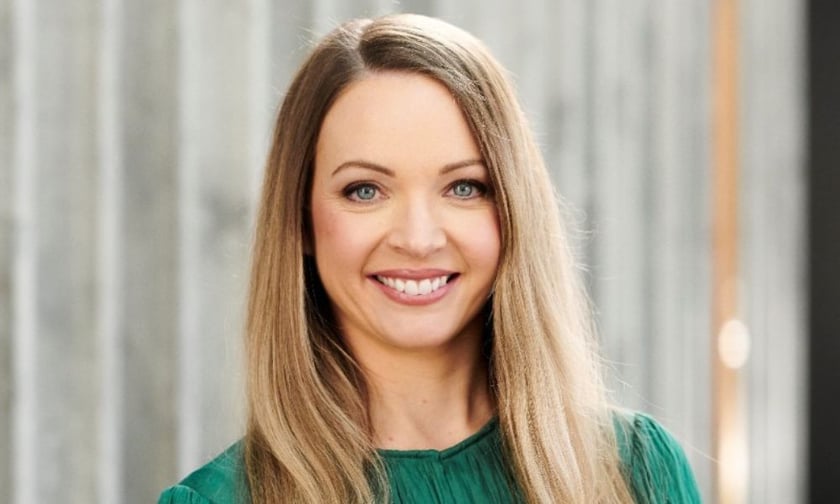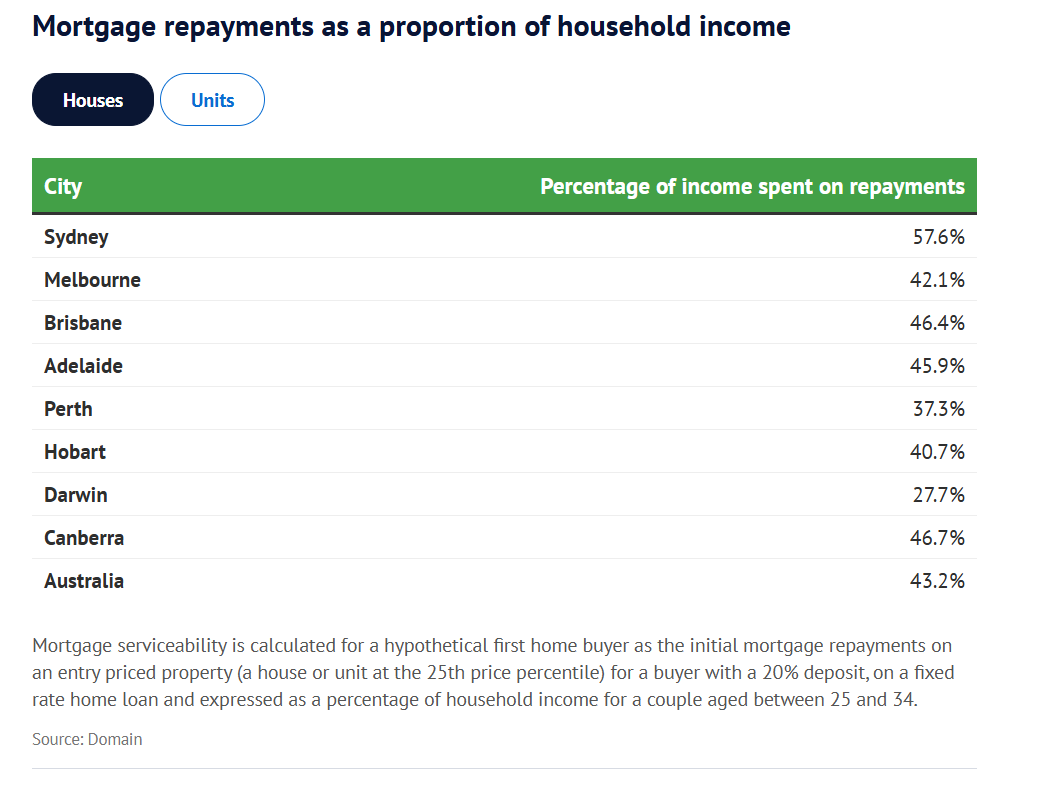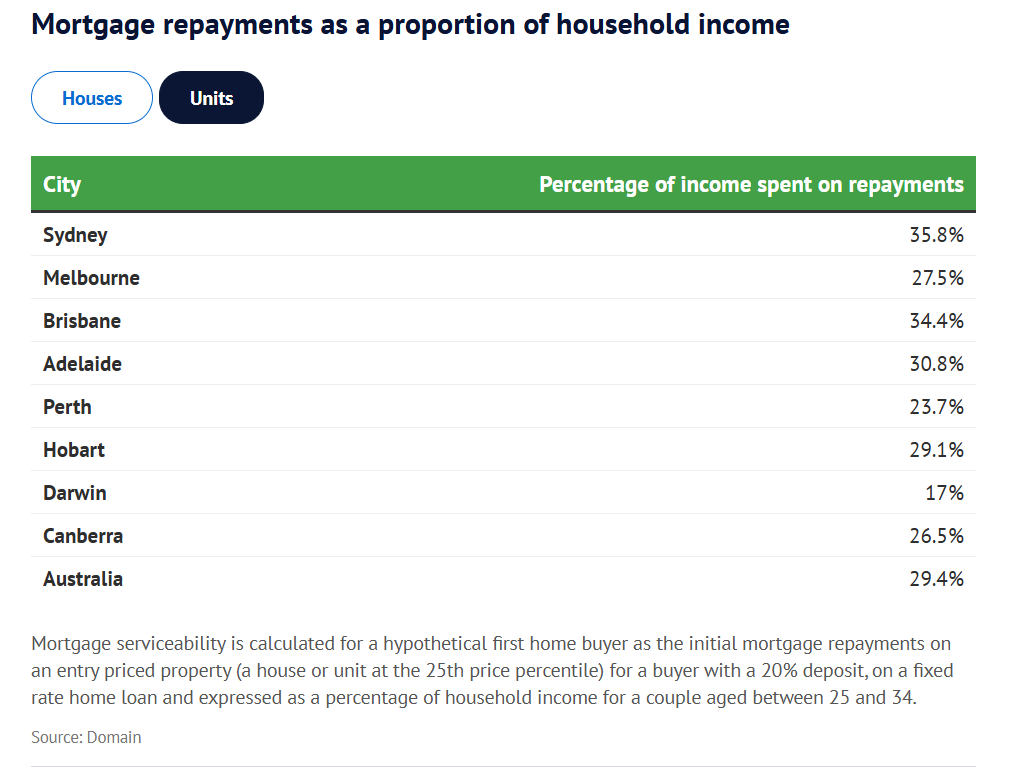

First-home buyers across Australia are facing significant mortgage stress, with entry-level houses requiring a substantial portion of household income for repayments.
According to Domain’s latest First Home Buyers report, even the most affordable homes in capital cities are stretching budgets to the limit, raising concerns about long-term financial stability.
The report highlighted the financial strain facing young couples purchasing their first homes.
In Sydney, buyers would need to spend 57.6% of their combined income on mortgage repayments for an entry-level house, defined as a property in the bottom quartile of the market priced at $990,000 or less.
In Melbourne, the figure is 42.7%, while Brisbane (46.4%), Adelaide (45.9%), and Perth (37.3%) also show high repayment ratios.
These percentages are well above the ABS’ threshold for mortgage stress, which is defined as spending more than 30% of household income on housing costs.
“When you backtrack to 2019, it was only entry-level homes in Sydney and Melbourne that were in mortgage stress,” said Nicola Powell (pictured above), Domain’s chief of research and economics. “But now all cities except for Darwin are in mortgage stress.”
Finding homes within the entry-level price range is challenging, particularly in Sydney and Melbourne.
“I’d be struggling to find something in Sydney. You could probably do Campbelltown or Blacktown, the Central Coast,” said Aaron Christie-David, managing director of Atelier Wealth.
Even with a 20% deposit, many first-home buyers are facing borrowing capacity issues due to high property prices and interest rates.
Chris Foster-Ramsay, Melbourne’s Foster Ramsay Finance director, noted that a budget of $670,000 would limit buyers to the city’s outer edges.
“If you start in Ringwood, you might end up in Healesville,” Foster-Ramsay said, emphasising the need to compromise on location or property type.
To cope with high repayments, first-home buyers are making significant lifestyle sacrifices.
Some are opting for units, which offer slightly more affordable options, or choosing to “rentvest” – renting in preferred locations while buying more affordable investment properties elsewhere.
The report showed that entry-level units are more affordable than houses but still consume a considerable portion of income.

In Sydney, mortgage repayments for units would account for 35.8% of household income, while Melbourne buyers would spend 27.5%. Brisbane (34.4%) and Perth (23.7%) also show high ratios, though they are lower compared to houses.

However, Matthew Hassan, Westpac senior economist, noted that units may not be a viable long-term solution for all buyers.
“They come with all the other issues, build quality and slower appreciation over time is often a trade-off,” Hassan said, pointing out that units may not be suitable for growing families or those looking to build wealth quickly.
Saving for a 20% deposit remains a major hurdle for first-home buyers.
In Sydney, it takes an average of six years and nine months to save for a house deposit, compared to five years and one month in Melbourne, five years and six months in Brisbane, and four years and six months in Perth, the Domain study found.
These calculations assume each partner saves 20% of their post-tax income every month.
Rapid house price growth and high interest rates are making it harder to save, leading to an increase in intergenerational wealth transfers.
“When you look at figures like this you can understand why the bank of mum and dad has become such an important lender,” Powell said.
A UBS survey found that 40% of Australians received or gave family financial assistance last year, mostly exceeding $100,000, with some more than $200,000. Similarly, Compare Club reported one in five parents provided more than $75,000 for property purchases, and 47% are considering similar help.
The Domain report painted a grim picture of housing affordability for first-home buyers across Australia.
With mortgage stress now a reality in every capital city except Darwin, and prices continuing to rise, the dream of homeownership is becoming increasingly out of reach for many young Australians.
As property prices climb and interest rates remain high, first-home buyers face tough choices: stretch their budgets, compromise on location and property type, or rely on family assistance to get a foot on the property ladder.
